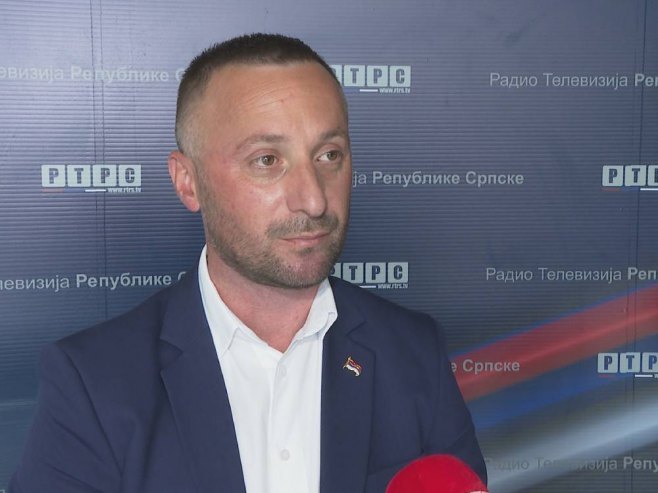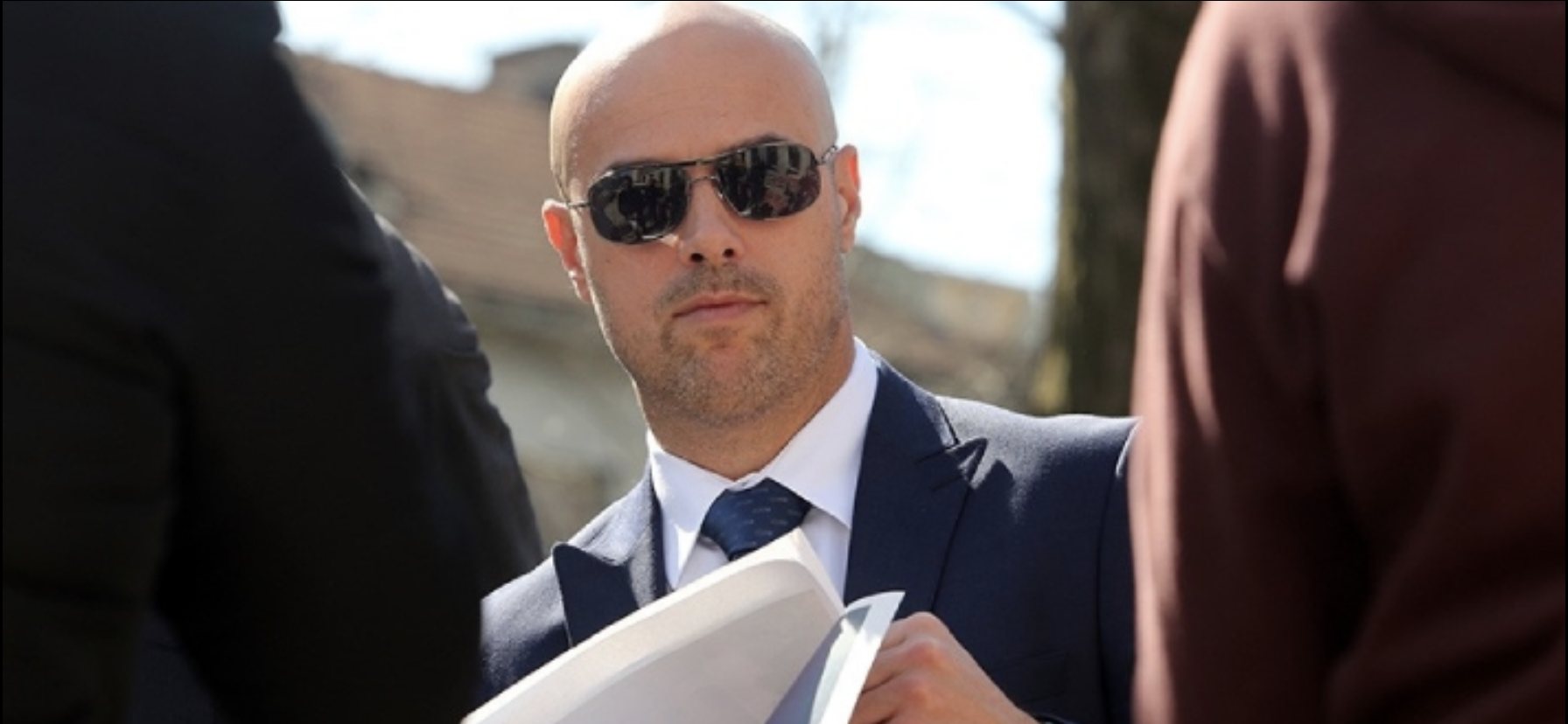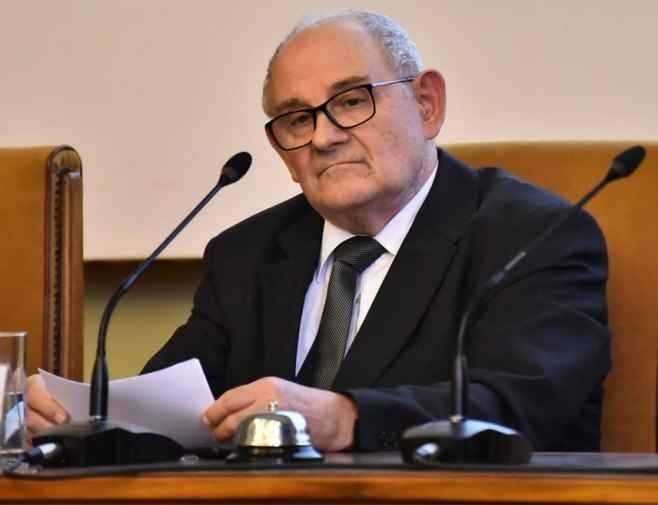Milan Tegeltija, advisor to the President of Republika Srpska, addressed the Iranian model of the political system in Sarajevo and the Bosniak Islamic revolution in an op-ed.
We present the op-ed in its entirety:
When Alija Izetbegović and Hasan Čengić, leaders of the Young Muslim movement in Bosnia and Herzegovina, as Sunni Muslims, began establishing ties with Shia Iran, many found it illogical, contradictory, and inconsistent given the Sunni-Shia antagonism in the Islamic world. However, today in Sarajevo, we see the results of that strategically well-thought-out and ultimately successful move.
To begin this analysis, I will first focus on the Iranian Islamic revolution and the political system established after it, so that I can subsequently compare it with what I call the covert “Bosniak Islamic revolution” and the political system established after it in the part of the Federation of Bosnia and Herzegovina predominantly inhabited by Bosniaks-Muslims.
The Iranian Islamic revolution began in January 1978, resulting in the transformation of Iran from a kingdom led by Shah Mohammad Reza Pahlavi into an Islamic Republic headed by Ayatollah Khomeini (the supreme religious-political leader), who was also the leader of the revolution and the founder of the Islamic Republic.
What is interesting for this analysis is precisely the combination of the state structure “Republic” and the adjective Islamic, which represents a contradiction and essentially an oxymoron.
Let’s start from the beginning. Islam on a dogmatic level does not recognize or acknowledge democracy, which is a widely known fact that doesn’t need special proof. On the other hand, a Republic is generally a democratic form of state and social structure.
However, after the Islamic revolution, Iran combined these two theoretically incompatible categories, essentially creating a dual state structure, which in one part has the characteristics of democracy with all democratic institutions, and in another part represents a classic theocracy.
Thus, in Iran, there is a Parliament, Government, President… there are elections, and citizens elect their representatives in elections. On the other hand, there is a supreme religious-political leadership embodied in the supreme religious-political leader Ayatollah, who is not elected through elections but is the supreme religious-political authority in the political system of the Islamic Republic of Iran, above all democratically elected institutions, who does not and cannot have opposition in Iran. Does this remind you of something? Of course, not completely formalized, but essentially it reminds you of a part of the Federation of Bosnia and Herzegovina predominantly inhabited by Bosniaks, where all democratic institutions have been established, elections are held, but there is also a Reis ul Ulema as an unquestionable religious-political authority, above all other authorities, and who does not and cannot have any opposition.
Let’s go back to Alija Izetbegović and Hasan Čengić as leaders of the Young Muslim movement in Bosnia and Herzegovina in the 80s and 90s of the last century and their seemingly contradictory establishment and building of ties with Shia Islamic Republic of Iran, even though they themselves are Sunni Muslims (the antagonism of Shia and Sunni in the Islamic world is a well-known fact).
A logical question arises: why did Alija Izetbegović and Hasan Čengić, seemingly contradictorily, decide to establish ties with Shia Islam and thus possibly provoke the condemnation of the Sunni Islamic world led by Saudi Arabia, which has very difficult relations with Iran filled with antagonism and disputes.
The answer to this question lies in the fact that both Alija Izetbegović and Hasan Čengić found in the Iranian model of Islamic revolution and Islamic Republic the only possible applicable Islamic state recipe that could be implemented in Bosnia and Herzegovina, which is located in Europe in the heart of the European continent.
They realized that the model of Arab Islamic theocracies could not be implemented in Europe and that such a project would be doomed to failure in advance, so they opted for a combined approach, which is precisely that contradictory model of the “Islamic Republic”, which would create the illusion of democracy, establish democratic institutions and hold elections, create the appearance of secularity and democracy that they could “sell to the West and Europe”, but which would essentially be under the supreme religious-political Islamic leadership and led by the Islamic Community and the Reis ul Ulema as the supreme (albeit informal) religious-political authority, who again, like in elections, is not elected through democratic elections.
Today, in the part of Bosnia and Herzegovina predominantly inhabited by Bosniaks, we see the result of this idea and the strategic decision of Alija Izetbegović and Hasan Čengić, which has come to life in the socio-political reality of Bosnia and Herzegovina.
What they could not implement from the Islamic Republic of Iran is the constitutional positioning of the Reis ul Ulema as the supreme religious-political leader (as the Ayatollah is positioned in Iran) because such an obvious Iranian political concept could not gain approval from the West and Europe. Therefore, they left him in the position of an informal but real religious-political authority above all other political authorities, creating the illusion of secularity and separation of religion and politics, while in reality, they did everything to make the Reis an undisputed religious-political authority, performing the role of “supreme religious-political leader of the Bosniaks” from the political shadows, solely due to the European geopolitical environment which could not accept any formalization of the Reis ul Ulema’s power.
Thus, if we compare Iran and the part of Bosnia and Herzegovina predominantly inhabited by Bosniaks, the result is as follows:
- Are there elections? There are in both Iran and that part of Bosnia and Herzegovina.
- Are there democratic institutions (President, Parliament, Government, etc.)? There are in both Iran and Bosnia and Herzegovina.
- Is there a supreme religious-political authority? There is in both Iran and Bosnia and Herzegovina.
- Does this supreme religious-political authority hold meetings with political leaders and international representatives? Yes, in both Iran and Bosnia and Herzegovina.
- Does this supreme religious-political authority set political goals and priorities for the people? Yes, in both Iran and Bosnia and Herzegovina.
- Does this supreme religious-political authority have any opposition? No, neither in Iran nor in Bosnia and Herzegovina.
- Is this supreme religious-political authority elected in democratic elections? No, neither in Iran nor in Bosnia and Herzegovina.
The only difference between Iran and that part of Bosnia and Herzegovina is that the position of the supreme religious-political authority is formalized in Iran, while in that part of Bosnia and Herzegovina it is covert.
Because of this, today in that part of Bosnia and Herzegovina predominantly inhabited by Bosniaks, we essentially (not formally) see the Iranian Islamic model of republican democracy, and we can freely say that the Young Muslim movement led by Alija Izetbegović and Hasan Čengić successfully carried out a covert Bosniak Islamic revolution in the heart and before the eyes of Europe and the entire West, and they succeeded!
Source: RTRS









